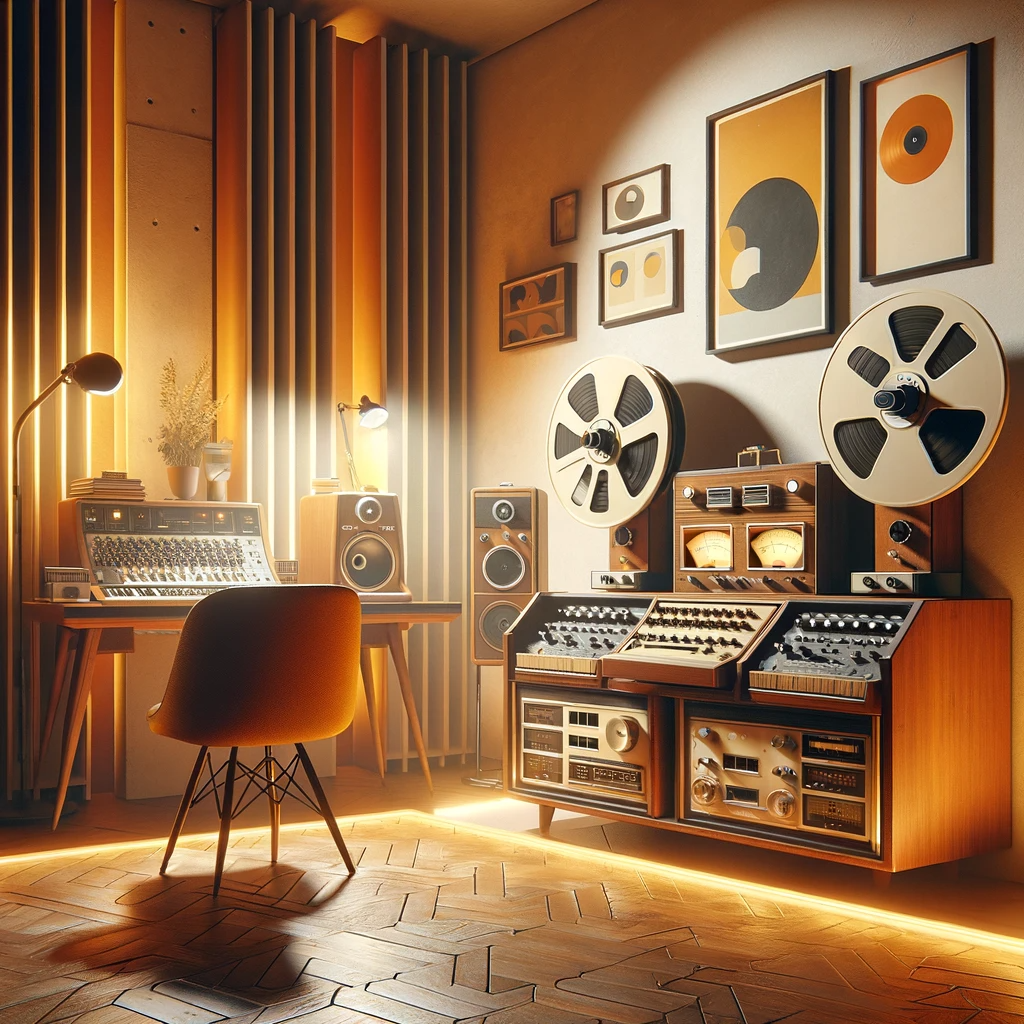Frippertronics is an innovative tape looping method developed and popularized by Robert Fripp, a renowned guitarist and founding member of the progressive rock band King Crimson. This technique was a groundbreaking concept in the early 1970s, particularly at a time when looping technology was not widely used or known in the musical world.
The origins of Frippertronics trace back to Robert Fripp’s collaborations and experimental work outside of King Crimson. One of his most significant partnerships was with Brian Eno, a musician transitioning from his work with Roxy Music to a more experimental solo career. Their meeting in 1972 at Eno’s London home studio marked the beginning of Frippertronics.
The setup involved two Revox tape decks (you can use any similar quarter inch tape machines) where the record head of the first deck was connected to the playback head of the second, creating a delay loop. The length of this delay, typically between 3 to 6 seconds, depended on the physical distance between the two tape decks. During their sessions, Fripp would play the guitar over Eno’s loops, adding layers or soloing over what became a kind of backing track. The process resulted in a master tape that captured the constantly evolving sound layers, characterized by a slight decay with each loop, akin to the effects of contemporary tape delays like the Echoplex or Space Echo.
Their collaborative efforts led to the creation of the 1973 album “No Pussyfooting”, which is considered a pioneering work in ambient music. The duo continued to refine their technique, evident in their subsequent album “Evening Star” and Eno’s solo work “Discreet Music”, which influenced his later ambient albums, including “Ambient 1: Music for Airports”.
Fripp and Eno’s innovative sound was showcased in a European tour in 1975, where they used their tape rig along with instruments like the EMS Synthi AKS and a Les Paul guitar. Although they collaborated on other projects, like David Bowie’s “Heroes”, it would be decades before they released another album together.
Meanwhile, Fripp continued to evolve the looping method, leading to more portable and solo-friendly versions, thus coining the term “Frippertronics”. His solo album “Exposure”, released in 1979, and the accompanying Frippertronics tour, highlighted this advancement. Fripp even experimented with variations like “applied Frippertronics” for rock and “discotronics” for looping with a disco beat.
Despite the emergence of digital loopers and delays, which offered practical advantages and clearer sound, they lacked the original warmth and spontaneity of the tape-based Frippertronics. However, modern digital recreations like the Strymon El Capistan and Boss-RE20 attempt to replicate the essence of Frippertronics, offering extended delay times and features like wow and flutter to mimic the original ambient magic of Fripp’s technique.
In summary, Frippertronics represents a significant milestone in the evolution of music technology and ambient soundscapes, showcasing the creative genius of Robert Fripp and his collaborators. It paved the way for future generations of musicians to explore and innovate within the realm of ambient music and beyond.
